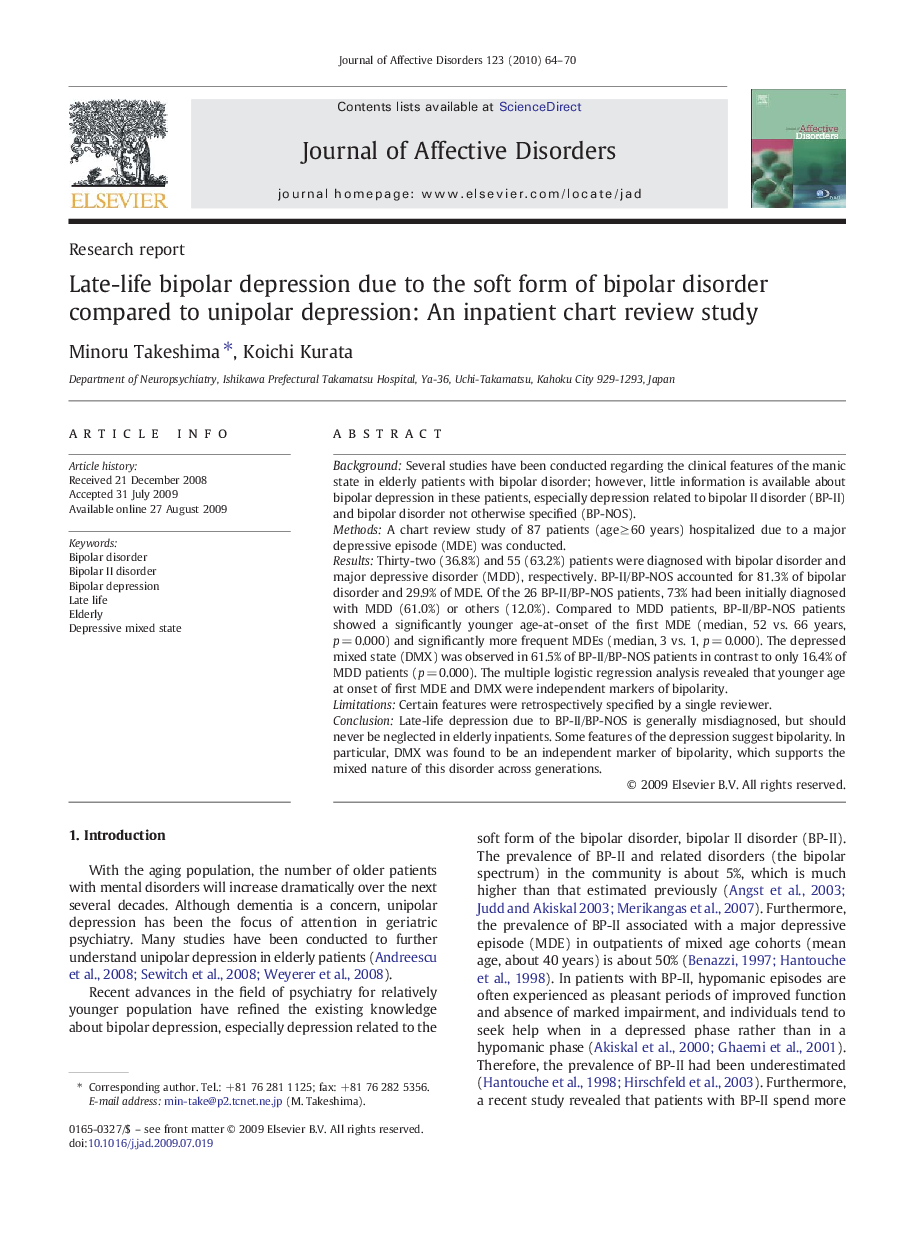| Article ID | Journal | Published Year | Pages | File Type |
|---|---|---|---|---|
| 6236426 | Journal of Affective Disorders | 2010 | 7 Pages |
BackgroundSeveral studies have been conducted regarding the clinical features of the manic state in elderly patients with bipolar disorder; however, little information is available about bipolar depression in these patients, especially depression related to bipolar II disorder (BP-II) and bipolar disorder not otherwise specified (BP-NOS).MethodsA chart review study of 87 patients (age â¥Â 60 years) hospitalized due to a major depressive episode (MDE) was conducted.ResultsThirty-two (36.8%) and 55 (63.2%) patients were diagnosed with bipolar disorder and major depressive disorder (MDD), respectively. BP-II/BP-NOS accounted for 81.3% of bipolar disorder and 29.9% of MDE. Of the 26 BP-II/BP-NOS patients, 73% had been initially diagnosed with MDD (61.0%) or others (12.0%). Compared to MDD patients, BP-II/BP-NOS patients showed a significantly younger age-at-onset of the first MDE (median, 52 vs. 66 years, p = 0.000) and significantly more frequent MDEs (median, 3 vs. 1, p = 0.000). The depressed mixed state (DMX) was observed in 61.5% of BP-II/BP-NOS patients in contrast to only 16.4% of MDD patients (p = 0.000). The multiple logistic regression analysis revealed that younger age at onset of first MDE and DMX were independent markers of bipolarity.LimitationsCertain features were retrospectively specified by a single reviewer.ConclusionLate-life depression due to BP-II/BP-NOS is generally misdiagnosed, but should never be neglected in elderly inpatients. Some features of the depression suggest bipolarity. In particular, DMX was found to be an independent marker of bipolarity, which supports the mixed nature of this disorder across generations.
